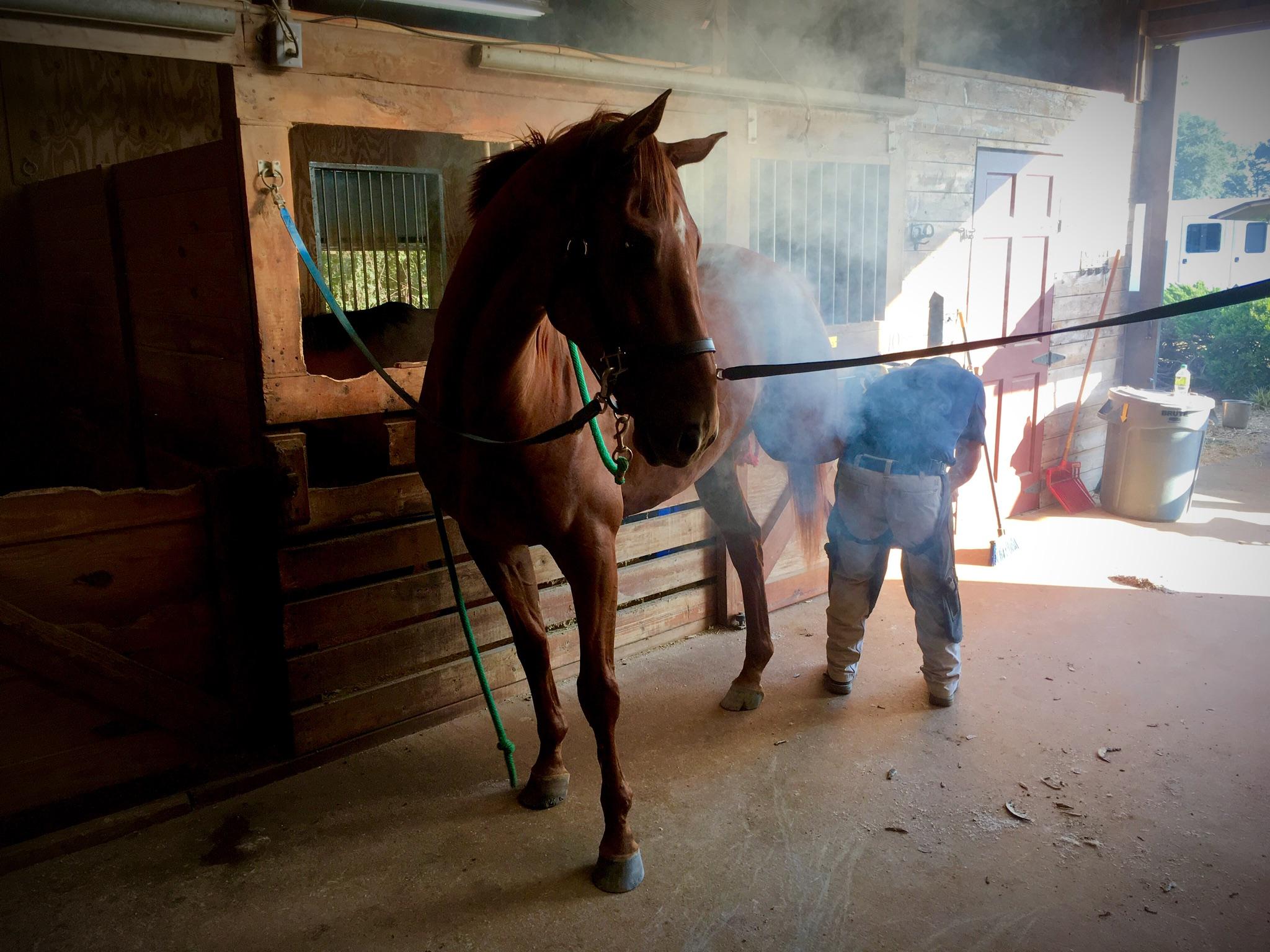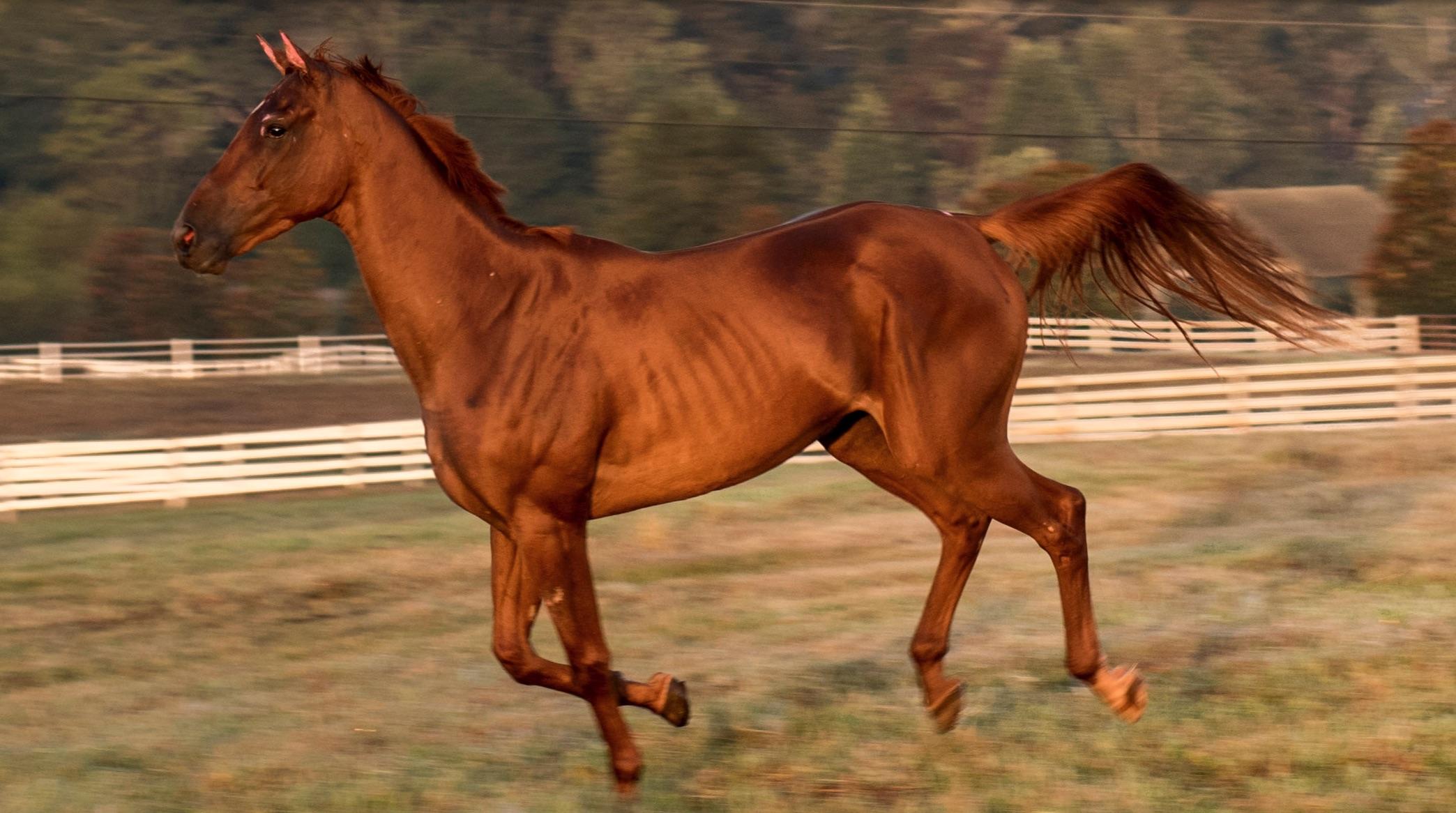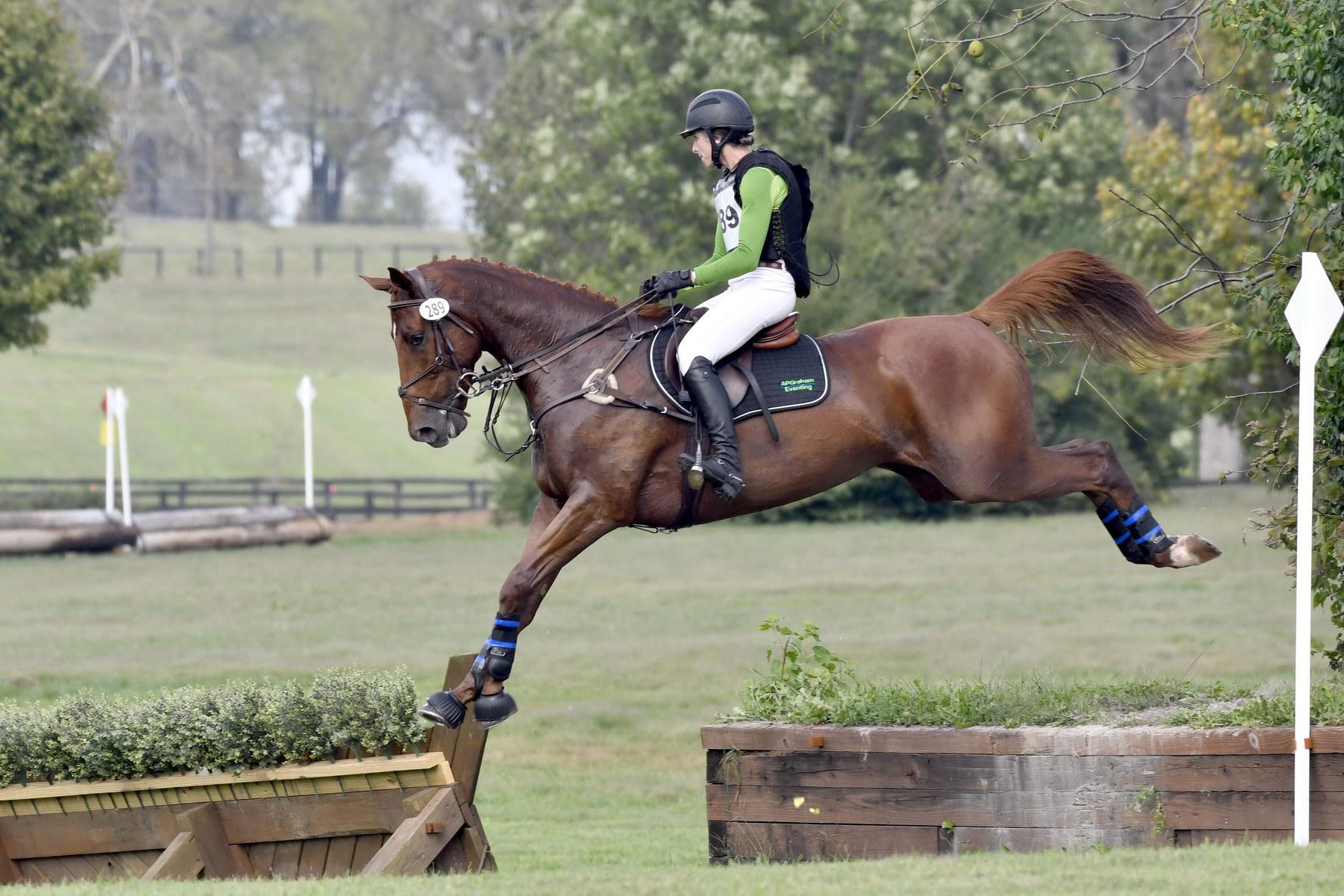
Thoroughbred Logic: Addressing the Thoroughbred Foot
To shoe or not to shoe? That is not the question in today’s Thoroughbred Logic. Or, more accurately, it may be the question, but the answer isn’t so simple. Each horse has its own set of needs. Learn more.
Welcome to the next installment of Thoroughbred Logic. In this weekly series, Anthropologist and trainer Aubrey Graham, of Kivu Sport Horses, will offer insight and training experience when it comes to working with Thoroughbreds (although much will apply to all breeds). Come along for the ride as she discusses her logic on addressing Thoroughbred feet.
I’m almost afraid to foray into this one… There likely are 10,000+ posts on social media platforms about Thoroughbred feet and most of them kick the hornet’s nest. There, inevitably hundreds of comments lead to advice (both stuff I’d respectively follow or wouldn’t touch with a 12-foot pole) and some very solid entertainment.
That said, I hope to both skirt the “barefoot versus shod” debate and do more than bemoan typically “bad” Thoroughbred feet. Rather, the plan here is to share slivers of my experience and how I make decisions about shoeing (or not) as they come off the track. Take what works, leave the rest.

Patrick Roth hot-shoes Forrest (Don’t Noc It) early on in his post-track career. I think we only did that one time… Photo by author.
Two things before I dive down my own happy rabbit hole here:
1) Nothing tops having a stellar, intelligent farrier (Thanks, Patrick) who is well versed in the breed, type of shoeing (or trimming) and the discipline you ride. Trust them and your vet — I promise that’s the best advice out there.
And 2) if you have to position me in a debate that I’m not trying to engage, more of my horses are shod than are not. But the whole mess of decisions that put shoes on, take them off, or go down the corrective shoeing route is never black and white, right or wrong.
Like most Thoroughbreds, I have a range of feet in my barn. Some have solid walls and thick soles, but most are what are considered “average TB feet” that come off the track somewhat crumbly with low-heels and long toes. Quite a few have one “high” and one “low” front foot and some have a dish, and on all of them the hoof will flare in any and all directions if left unchecked.

Rhodie (Western Ridge) actually has pretty good feet (minus a recent episode of sore heels). Photo by Cora Williamson.
Among my personal horses, here’s the rundown on shoes (because it provides an idea of range): Giant’s Gateway and Crafty Charger are barefoot (one because he is in a field in Kentucky letting down after the track, and one because he is just now coming out of stall rest), Forrest (Don’t Noc It) and Louis (Unbridled Bayou) are in simple front shoes (both are in light work), Hot to Seek Her is in all four with no pads (he needs the back pair to help support his hind end), and Rhodie (Western Ridge) and Mountain Holiday are in all four with pads (because those two best friends love to make my life difficult and are in full work).
Taken as such, sure, there’s a general trend among my horses: more work = more shoes. But when to put those shoes on, and what each horse wears is not etched in stone.

Erica Brown and I stand with our Retired Racehorse Project 2020 and 2021 Makeover mounts, all who required slightly different shoeing protocols and timelines. Photo by Alexa Wegner.
Part of how and when I make shoeing decisions deals directly with how they feel moving out on their feet. Regardless of the horse’s job and workload, my goal is to avoid making them tender. Hoof testers will confirm if they are sore, but at points, so will how they ride: choppy steps, a hollow, “stabby” trot, lack of desire to go forward, come into contact, or push from behind. Such issues aren’t necessarily solved by shoes alone (how they are ridden, tack-fit, body aches and pains, etc. all factor in). That said, attending to their feet is never a bad place to start.
When making shoeing decisions, my farrier and I take into consideration:
- Hoof strength/conformation
- Body and joint issues
- Workload/Training & Riding Timeline

Russell Hudson (Patrick Roth’s right hand farrier) buffs Rhodie’s feet in a recent shoeing. Rhodie moved to four shoes as his jumping load increased. Photo by author.
Perhaps running back through my initial bumbling-fumbling-no-damn-clue-what-I-was-doing set of decisions about shoeing a Thoroughbred will help clarify a bit…
Not all horses can immediately drop their racing plates and be OK barefoot, though that was 100% my expectation when I first purchased Forrest (my first personal Thoroughbred as an Adult). The day after he stepped off the rig, I had my farrier remove his plates (or well… the three and a half of them that were left – yep, he literally had half a plate still tacked to his hoof). My plan was generic: pull his shoes and turn him out for a few months so that his body could “let down” from the track and head into training a few months later. Somewhere, I had heard that this was “the way” to do it. (Turns out… there are many “ways”).

Forrest (Don’t Noc It) as a three-year-old on the track in Florida. Photo courtesy of Tropical Racing.
Forrest (who had small, weak feet) went swiftly foot sore and unsurprisingly, his body soreness from the track refused to resolve. The first time he abscessed, it was an unexpectedly cold October morning, about three weeks after he had stepped off the shipper’s rig. When I went to bring him in, I found him shivering and three-legged lame. I called the vet in a mild panic, worried that he had broken something. He was non-weight-bearing and suddenly far sweeter than his usual ultra-lovable-but-annoying-as-hell self.
The abscess resolved in less than a week, and my vet kindly saved me a bill that day by talking me off the “broken leg” ledge and into a few packs of Epsom salts. (Worry not, Forrest has accrued ungodly vet bills since, but at least I dodged that one… I’ll take what I can get).
The next time my farrier was out, we put Forrest in fronts. That decision came from my worries about his soreness (feet and body), and my goals to be able to start riding him into a sport horse career in eventing beginning in the next few months. The “pull shoes and kick them out” way of doing things definitely works for some, but it wasn’t working for Forrest. When I eventually began jumping and competing him, my farrier and I again got together and decided to put him in all four to help support his not-quite-perfect joints and give him a base to push from without worry of tenderness.
Four-and-a-half years later, Forrest has some of the strongest feet on the farm, holds his shoes for the full five-week periods between shoeing, and certainly doesn’t go easy on them in the field. When I stepped him down from his career as my upper-level hopeful (a decision that had to do with his brain and his stifles), I took his back shoes off in hopes that he could stay comfortably in light-mid-level work while wearing only fronts (yes, shoes are pricey, and I don’t have a trust fund). He was tender for a few months, but his feet adjusted, and he is now happily trucking into his second year as such.

Forrest at one of his most-recent shows, looking like a total beast/porker. Photo by a Kivu team member.
With Forrest I have learned a ridiculous amount. In part, I figured out how not to panic over abscesses and minor issues. But more importantly, I learned that shoeing is as much about his anatomy and conformation as it was about my timeline and training goals.
There is no one-size-fits-all guide. Yes, there are horses show jumping barefoot in the Olympics and barefoot Thoroughbreds doing everything from Barrel Racing to Eventing. There are myriad ways to address their feet and keep your horse happy and healthy. But whether shoeing or not, aligning their unique hoof anatomy, body and conformation issues, and your training timeline is essential. And I suppose, the biggest take away is that as we riders increase what we ask of our horses, there is commiserate need to assess and often increase the level care and maintenance we provide.
Forrest is a pretty typical case, and much of what I learned with him applies to probably 90-percent of the horses that come through my barn. That said, there are always exceptions. Next week I’ll tackle Mountain’s disastrous feet and his uphill battle towards soundness.






